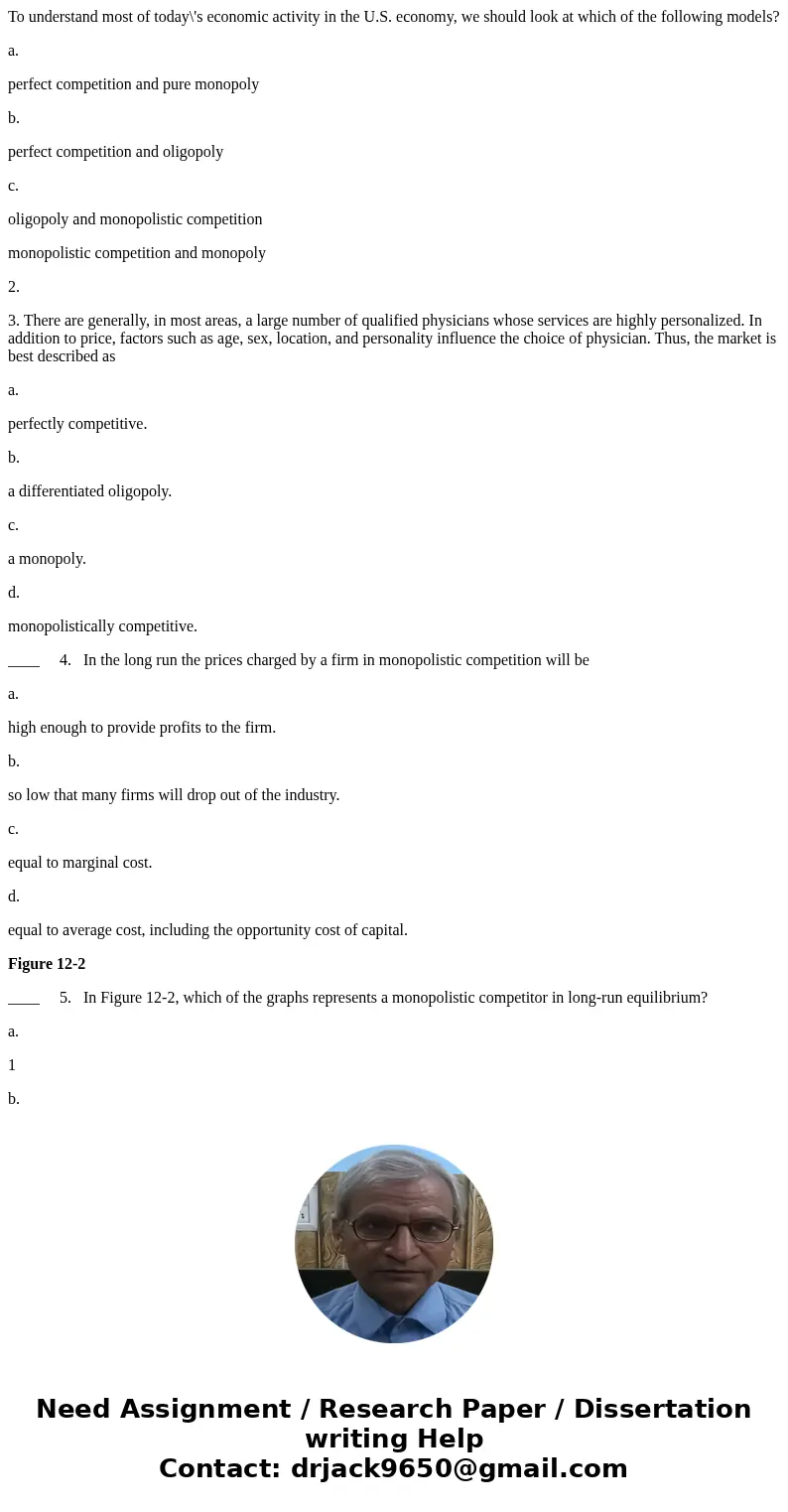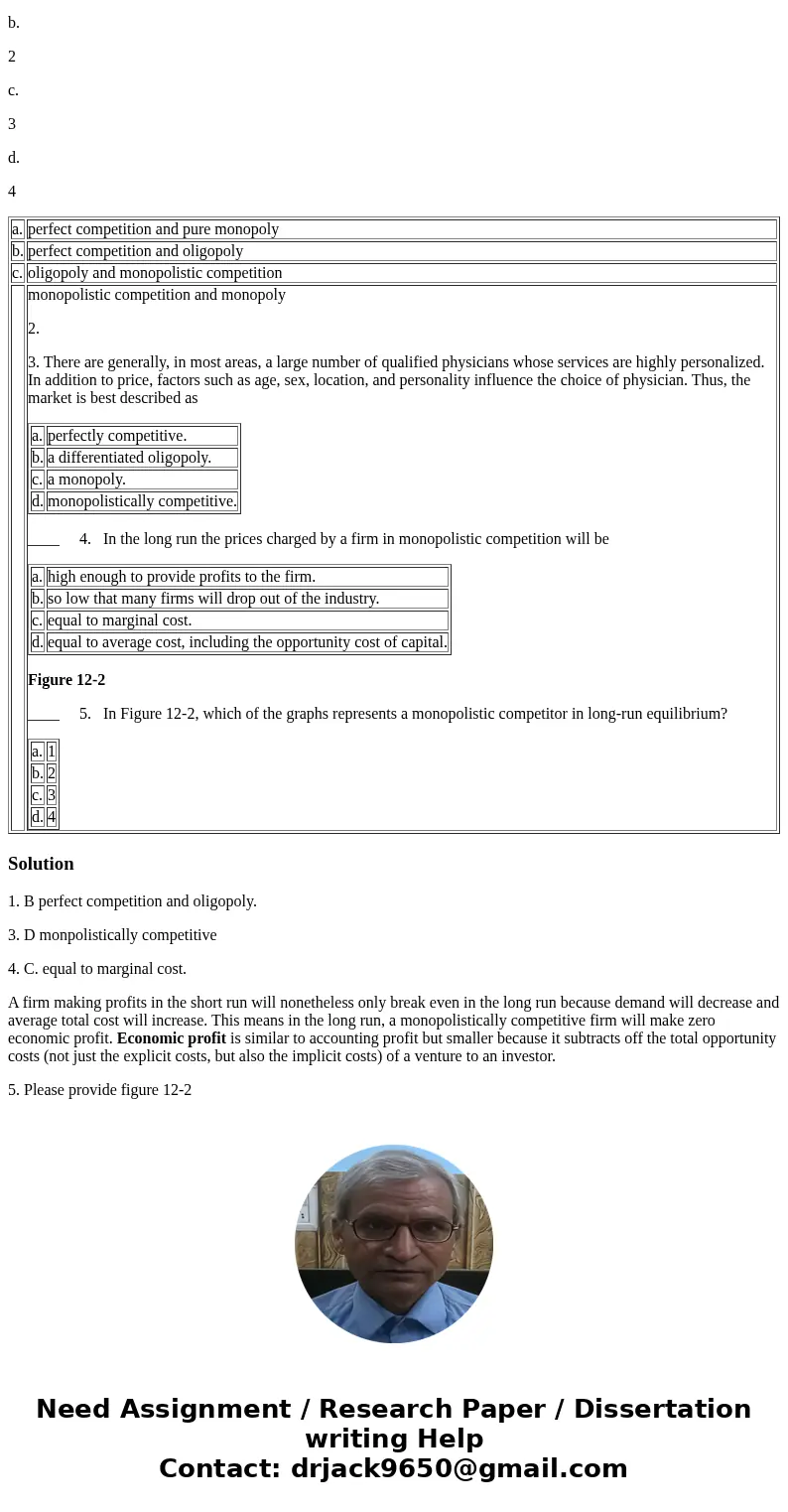To understand most of todays economic activity in the US eco
To understand most of today\'s economic activity in the U.S. economy, we should look at which of the following models?
a.
perfect competition and pure monopoly
b.
perfect competition and oligopoly
c.
oligopoly and monopolistic competition
monopolistic competition and monopoly
2.
3. There are generally, in most areas, a large number of qualified physicians whose services are highly personalized. In addition to price, factors such as age, sex, location, and personality influence the choice of physician. Thus, the market is best described as
a.
perfectly competitive.
b.
a differentiated oligopoly.
c.
a monopoly.
d.
monopolistically competitive.
____ 4. In the long run the prices charged by a firm in monopolistic competition will be
a.
high enough to provide profits to the firm.
b.
so low that many firms will drop out of the industry.
c.
equal to marginal cost.
d.
equal to average cost, including the opportunity cost of capital.
Figure 12-2
____ 5. In Figure 12-2, which of the graphs represents a monopolistic competitor in long-run equilibrium?
a.
1
b.
2
c.
3
d.
4
| a. | perfect competition and pure monopoly | ||||||||||||||||||||||||
| b. | perfect competition and oligopoly | ||||||||||||||||||||||||
| c. | oligopoly and monopolistic competition | ||||||||||||||||||||||||
| monopolistic competition and monopoly 2. 3. There are generally, in most areas, a large number of qualified physicians whose services are highly personalized. In addition to price, factors such as age, sex, location, and personality influence the choice of physician. Thus, the market is best described as
____ 4. In the long run the prices charged by a firm in monopolistic competition will be
Figure 12-2 ____ 5. In Figure 12-2, which of the graphs represents a monopolistic competitor in long-run equilibrium?
|
Solution
1. B perfect competition and oligopoly.
3. D monpolistically competitive
4. C. equal to marginal cost.
A firm making profits in the short run will nonetheless only break even in the long run because demand will decrease and average total cost will increase. This means in the long run, a monopolistically competitive firm will make zero economic profit. Economic profit is similar to accounting profit but smaller because it subtracts off the total opportunity costs (not just the explicit costs, but also the implicit costs) of a venture to an investor.
5. Please provide figure 12-2


 Homework Sourse
Homework Sourse